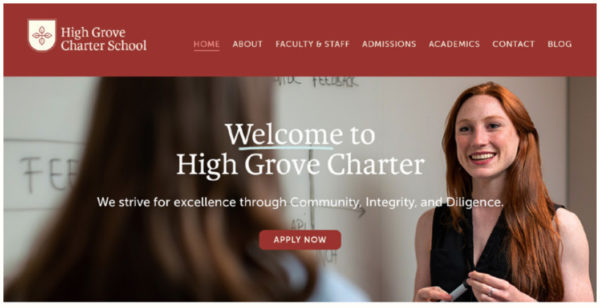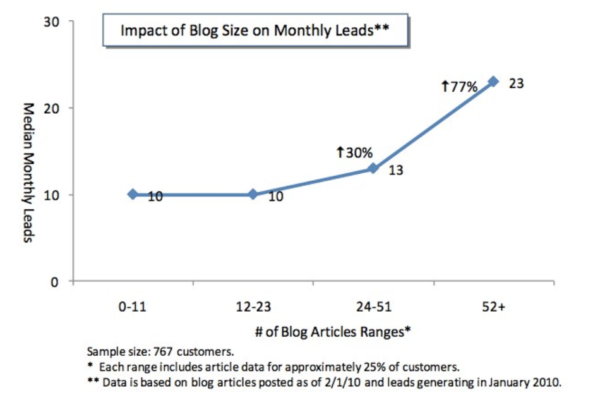
You know that to keep your school community growing, you have to get out there and market it. There’s only one problem: your background is in education, not marketing.
The idea of marketing your school can feel intimidating for many education professionals. Wouldn’t it be great if there was a simple way to learn the best tools and strategies for education marketing?
Well, you’re in luck. There are countless ways to market your school, and most of them involve platforms that you and your prospective students or families already use. Email, for example, is one of the most reliable methods of marketing. Social media sites and search engines like Google are also a great way to expand your reach — no marketing experience necessary.
School marketing probably sounds much less intimidating now. Let’s break it down even further and look at four great ways to market your school using email, social media, and web content using the tools you already have.
Stay connected to students, families, and staff with expert marketing advice and all the tools you need, all in one place.
1. Send a regular email newsletter
Did you know that 93.6% of 25- to 44-year-olds use email? The numbers are similar for internet users between ages 15 and 24, as well as 45- to 64-year-olds.
This makes email a great avenue for reaching lots of prospective students and parents at once. Sending out an engaging newsletter every week or so can help get your school in front of a lot of new people, while also engaging the students you already have.
Using email segments
The best part about an email newsletter is that you can target it to the interests of the readers. That means taking your list of contacts and dividing it up into groups called segments, each of which gets different messages tailored to their interests.
For example, you might have separate segments for current families and for prospective families. Your current families would get a newsletter with topics like:
- Upcoming community events (fundraisers, fairs, parent volunteer opportunities)
- Class news and reminders (field trips, performances)
- Student achievements
Your prospective families might get other updates, such as:
- Facility upgrades and improvements (new technology, updated student resources)
- Extracurricular successes (sports wins, arts competitions, etc.)
- School success tips (how to help students get more sleep, study well, etc.)
- Enrollment deadlines
What should an email newsletter look like?
People are more likely to look for stories that interest them than read the entire newsletter from beginning to end, so make sure your newsletters are visually engaging and scannable.
You don’t need high-level design skills to make a nice newsletter. There are plenty of pre-built newsletter templates available online. If you use an email marketing provider like Constant Contact, you also have the option to create an original template using your school’s colors and logos.
If any of your stories are too long to fit completely into the newsletter, put the whole article on your site and link to it from the newsletter. Include a catchy introduction to the story, then add a call-to-action — a clickable button that invites people to do something like “learn more about athletics” or “register for our open house” — that lets people read on.
How often should you send your newsletter?
The frequency of these emails will depend on your audience.
For current families, a biweekly or monthly send might be just right. For prospective students, especially during enrollment season, consider emailing a bit more often. You can also try alternating newsletters with other email marketing messages, like open house announcements, application deadline reminders, and the like.
No matter the schedule you settle on, remember that consistency is key. Choose a pace you can commit to without getting overwhelmed.
2. Build a comprehensive website
Many school websites are hotbeds of untapped potential. Sure, they include lots of information for current students, from important dates to lunch menus, but they’re not laid out in a way that encourages potential students to explore and learn what you’re all about.
Revamping your school’s website can do wonders for your marketing. With just a few simple tweaks, you can have a professional-looking presence that you’ll feel proud to point potential students toward.
Start by making a list of the basic pages that you need. We recommend including at least these six pages:
- A homepage with an easily navigable menu bar, welcome message, and “Apply Now” button
- An About page where people can learn about your school’s history and culture
- A Faculty and Staff page that includes qualifications for key department heads and administrators
- An Admissions page targeted toward interested families, including admission requirements and steps to enrollment
- An Academics page explaining your educational standards and course offerings
- A Contact page with multiple ways of getting in touch

You may also want to add an Extracurriculars page with detailed information about athletics, arts, clubs, and other activities. List the sports you offer and add mentions of special extracurricular opportunities that students might not get elsewhere.
If you don’t have anyone on staff with web design experience, that’s okay. There are plenty of website building tools that let you create professional-looking sites, even if you have no tech background whatsoever. You can even offer the task to a parent committee or student club and get your community involved.
3. Write a school blog
Adding a blog to your website is an easy and effective way of staying in touch with your school community, while at the same time driving more traffic to your site.
Every time you create a blog post, that’s another unique page for your website. More pages mean more opportunities for Google to notice your site and select it for high ranking in search engine results. A higher ranking means more interested families can find your site.
Put simply, the more you blog, the more interested parties — known as “leads” in the business world — you’ll get on your website.

Don’t worry, you don’t have to create all of those blog posts yourself. Have students, faculty, and parents write about happenings in classes and extracurriculars. You can even include video blog posts, which are easy to make and fun to watch.
4. Post targeted social media ads
Did you know that 72% of the general public uses social media? A social media presence is a must-have for the modern school, but if you want to use social media as a marketing tool, you have to go beyond standard posts.
Your social posts — the updates you share for free on your Facebook or Instagram pages — mostly get seen by current students and parents. If you want to expand your reach and put your school’s name in front of new audiences, you need paid ads that target potential families.
Facebook is a great place to start because it makes ad targeting easy. You can define the characteristics of your core audience (for example, parents who live in a certain geographic area) and make sure those people see your ads. If you’re not sure where to start, services like Constant Contact can help you get your social media ad campaign off the ground quickly and easily.
The takeaway
Now that you know of several ways to market your school using email, social media, and your school website, you can start reaching out and building your presence. Start by reviewing The Download, our complete guide for school marketing, and see what inspires you.
Maybe you’ll start by making a video introduction for your blog or creating your email newsletter template. However you approach your marketing, remember that you don’t need to go it alone. Get your school community involved and before you know it, that community will be growing fast.




